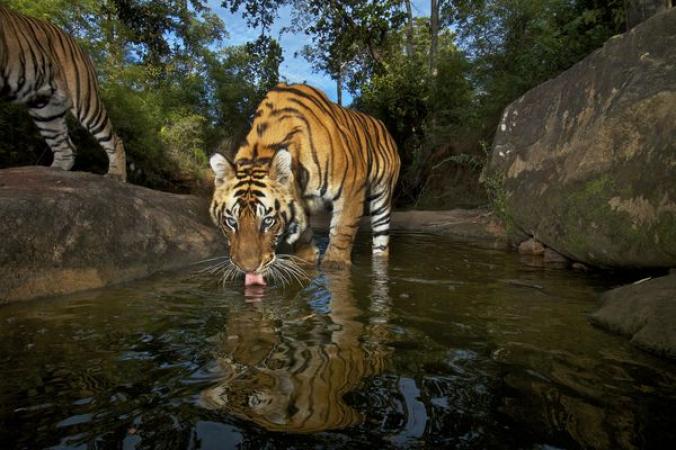
On National Conservation Day, celebrated on September 20, 2018, Nepal announced that there are now an estimated 235 wild tigers in the country, nearly doubling the baseline of around 121 tigers in 2009.
- The earlier tiger survey in 2013 had estimated the tiger population at 198.
- According to the WWF (Nepal) if these trends continue, Nepal could become the first country to double its national tiger population since the launch of ambitious TX2 goal at the St Petersburg Tiger Summit in 2010 to double the world’s wild tiger population by 2022.
- Nepal conducted its national tiger survey between November 2017 and April 2018 in the transboundary Terai Arc Landscape (TAL), a vast area of diverse ecosystems shared with India.
- According to the Country Representative of WWF-Nepal Dr. Ghana S Gurung, while Nepal is just a few tigers away from achieving the goal of double tiger numbers by 2022, it also underscores the continued need to ensure protection, and improved and contiguous habitats for the long-term survival of the species.
Tx2 goal
- It is a WWF’s global tiger programme set at the St Petersburg Tiger Summit in 2010 by the governments of the 13 tiger range countries to double the world’s wild tiger population by 2022.
- As per WWF, by 2010, the world had lost over 95% of the world’s wild tiger population to rampant poaching and habitat loss. As few as 3,200 of them were left.
Why 2022?
- The next Chinese Year of the Tiger is 2022. That is why all 13 tiger range governments committed to the most ambitious conservation goal set for a single species – to double the number of wild tigers by 2022.
Umbrella species
- Since tigers not only protect the forest by maintaining ecological integrity, but also by bringing the highest levels of protection and investment to an area. That is tigers are an “umbrella species”. It means that their conservation also conserves many other species in the same area.
Tiger range countries
- There are currently 13 tiger range countries; Bangladesh, Bhutan, Cambodia, China, India, Indonesia, Lao PDR, Malaysia, Myanmar, Nepal, Russia, Thailand and Viet Nam.


